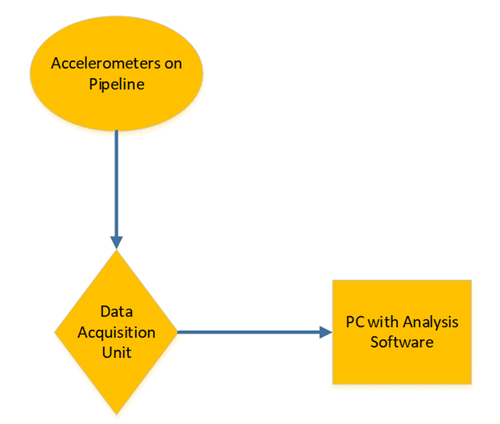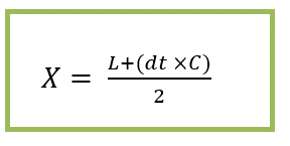Posted Nov 28, 2017
Vibrations based leak detection technology is an emerging technology in pipeline leak detection and loss monitoring. This article offers a basic understanding of vibrations induction in pipelines, vibration measurement, and analysis of this data to detect pipeline leaks.
Principle of the Technology
The behavior of a leaking pipeline depends upon the pipeline’s structure, hydraulic behavior and its interaction with the fluid flowing through it. The pressure changes caused by a leak are accompanied by a change in amplitude of the vibration response of the pipeline surface in a specific pattern. The pressure fluctuations are proportionate to the surface acceleration of the pipe and can be measured by an acceleration transducer (accelerometers that use the differential equation of motions of a vibrating beam).
Cross-correlation techniques are used in the power spectral analysis of the vibration signal to filter out noise caused by transients, leaving behind the useful signal indicating a leak/no-leak condition in the pipeline.
Vibration-based LDS has been deployed using fiber optic cable. However, it is prohibitively expensive and extremely risky to retrofit fiber-optic cable on existing pipelines, so the technology is more cost-effective and efficient when deployed in individual, self-powered field devices that can be concealed anywhere along the pipeline.
System Architecture/ Components used

Figure 1: Principal of Vibration based Leak Detection
The Vibration based LDS consists of two main components; field devices for measuring and transmitting the vibration signals and a remote computer with software to analyse the signals.
Figure 2 shows a simple system architecture. The sensors measure the pipeline surface acceleration and pass the data to data acquisition units that record, amplify and digitize the analog signals. The data acquisition units transmit the data to the remote PC via GSM, radio or satellite. The vibration analysis software processes the data to determine if a leak is present or not.

Figure 2: System Architecture
Processing of Data
The LDS uses generalized cross-correlation (GCC) algorithms to analyze the vibrations that a leak introduces into the pipeline. This technique is applied to acceleration data measured at two discrete locations, applying weighting functions (at least three) that include PHAT, EKHART, SCOT or ROTH. The system uses the calculation results to determines the most appropriate method to declare if there a leak in the signal.
- Fourier transformation converts signals in the time domain into the frequency domain.
- The cross-power spectral density function of the signal is determined.
- The frequency domain signals are weighted by GCC based on the cross-power spectrum. This also suppresses the effect of noise in the signal.
- The peak points in the results (signal waveform and spectrum) are obtained. When there is no leak in the pipeline the spectrum significantly has no peak point. When a leak occurs, the spectrum has two peaks that are sensed two vibration sensors located upstream and downstream of the leak.
- The peak point in the results is used in conjunction with the sampling frequency to calculate the time difference (time delay) between the two signals. Knowing the distance between two vibration sensors (L), the signal transmission speed (C) and time delay (dt), the leak location (X) is calculated as follows:

Conclusion
Vibration-based leak detection technology is still evolving. However, the availability of a wide range of accelerometers and vibration analysis software packages in the market today makes this a cost-effective and promising compliment for pipeline leak and product theft detection and location, especially on installed pipelines that lack fiber optic cables.
This technology can also provide pipeline operators with 'intrusion' or 'third party disturbance' indications when the sensors are configured to act as vibration sensors
References
[1] Qi Wang, Kaixing Hong, Xiangxian Chen, Hai Huang, Design of a Vibration based Leak Detection System, Zhejiang University, Hangzhou, 2014
[2] Sepideh Yazdekhasti, Kalyan R. Piratla, Sez Atamturktur & Abdul A. Khan (2016): Novel vibration-
